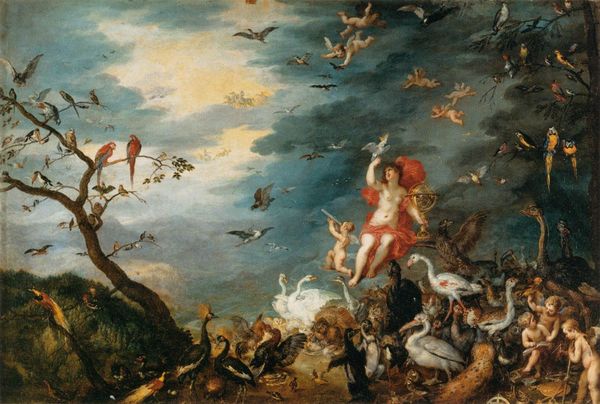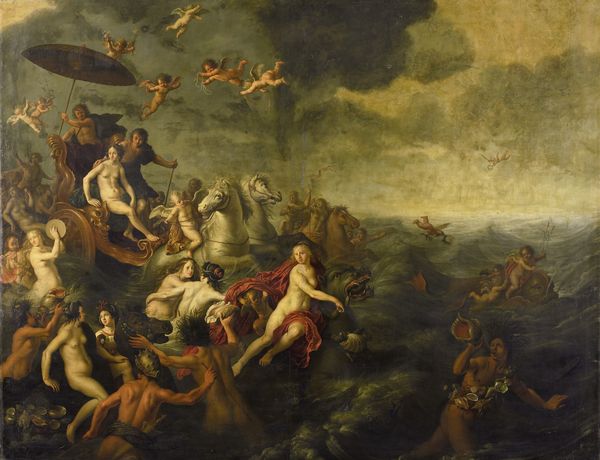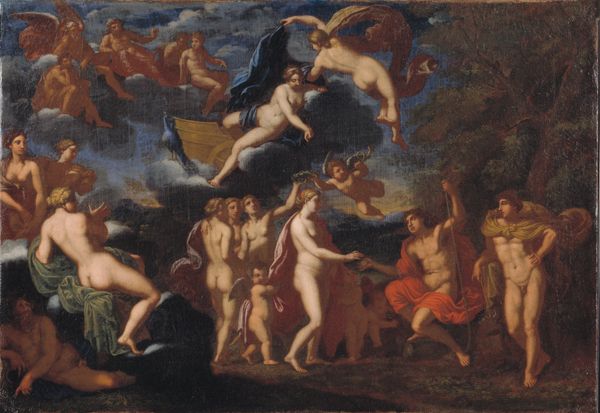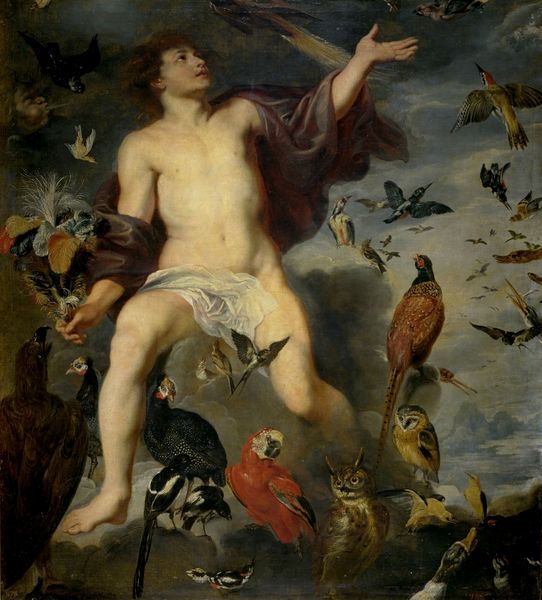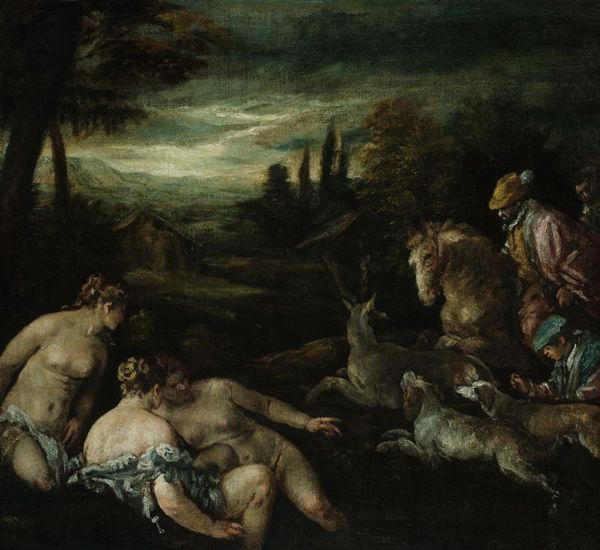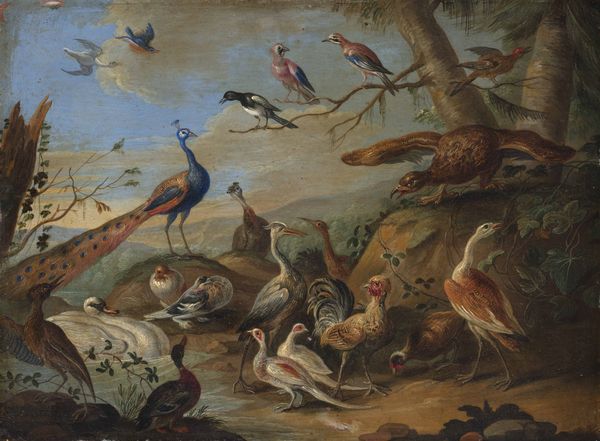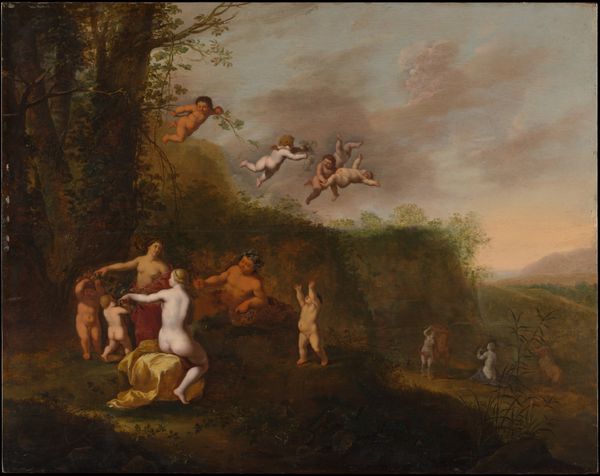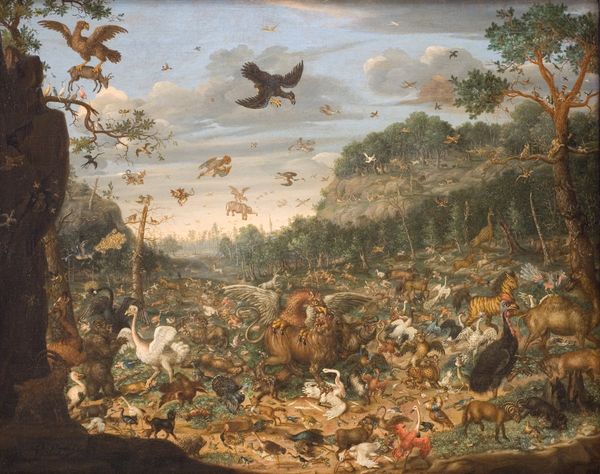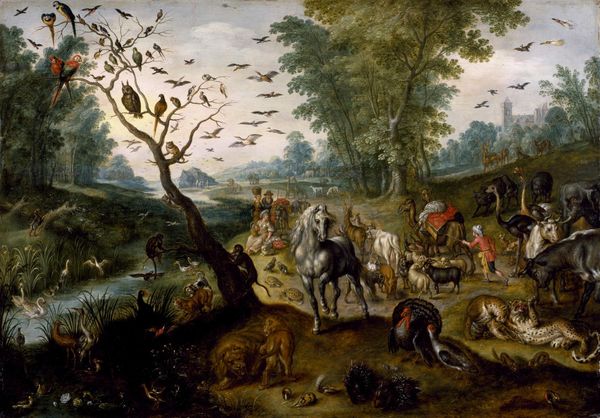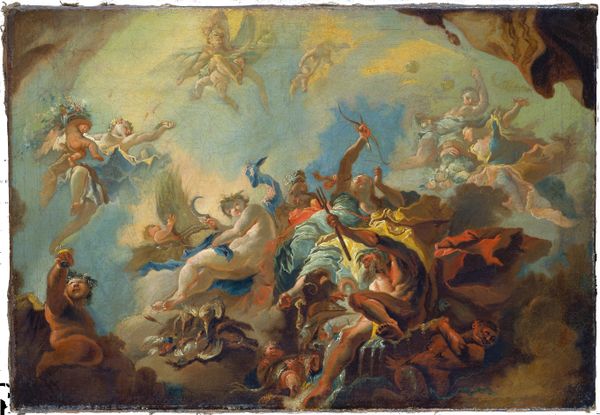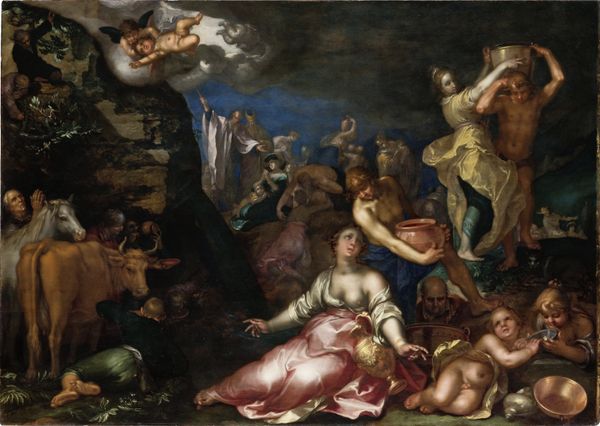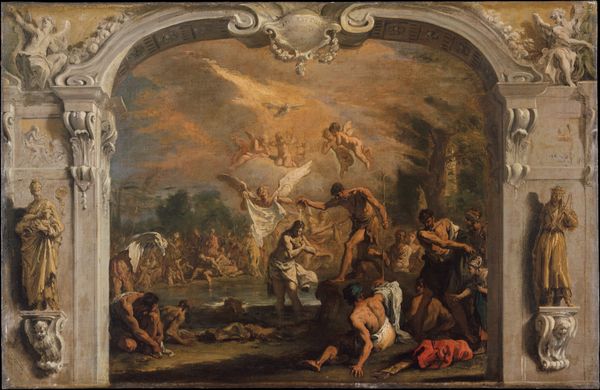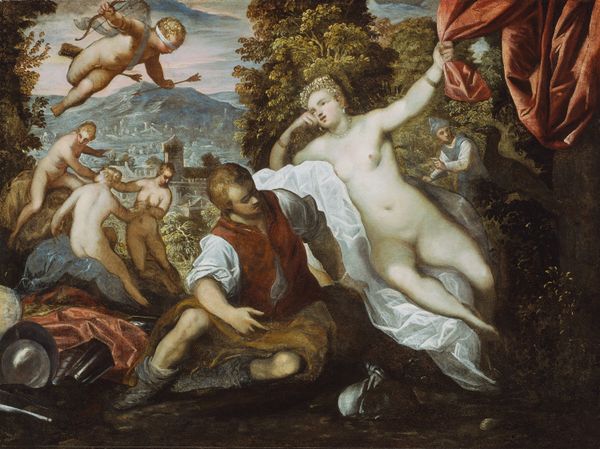
painting, oil-paint
#
allegory
#
baroque
#
painting
#
oil-paint
#
landscape
#
figuration
#
oil painting
#
watercolor
Copyright: Public domain
Earth, Water, Air and Fire! The four classical elements were proposed by various cultures and philosophers from ancient times onwards. Between 1604 and 1611, the Flemish Baroque painter Jan Brueghel the Elder (1568-1625) painted four canvases to represent each of the elements. This one, completed in 1611, represents Air. ️ Jan Brueghel the Elder was the younger son of the famous artist Pieter Bruegel the Elder. Jan Brueghel worked on a smaller scale to his father, and specialised in natural landscape scenes. In the background of this scene, we can see a fantastic landscape of rolling hills lined with feathery trees. As a Baroque artist, Jan Brueghel also worked with dramatic compositions and theatrical contrasts of light and shadow. This painting depicts a nude female figure: Urania, the goddess of astronomy and stars. She raises a bunch of peacock feathers above her head, symbolising flight. In her other hand, Urania holds an armillary sphere (a model of the earth complete with astronomical lines, used to demonstrate the movement of the stars). Surrounding Urania, Jan Brueghel the Elder painted various species of bird from turkeys and ostriches to owls and parrots. Zoom into the flock – which bird is your favourite? There are also flying cherubs, which appear to be being swept up in the high winds. In order to portray the effects of the sky and atmosphere, Jan Brueghel the Elder used a dynamic composition which emphasises movement. You can almost feel the breeze in your hair just looking at the brushstrokes!
Comments
No comments
Be the first to comment and join the conversation on the ultimate creative platform.
